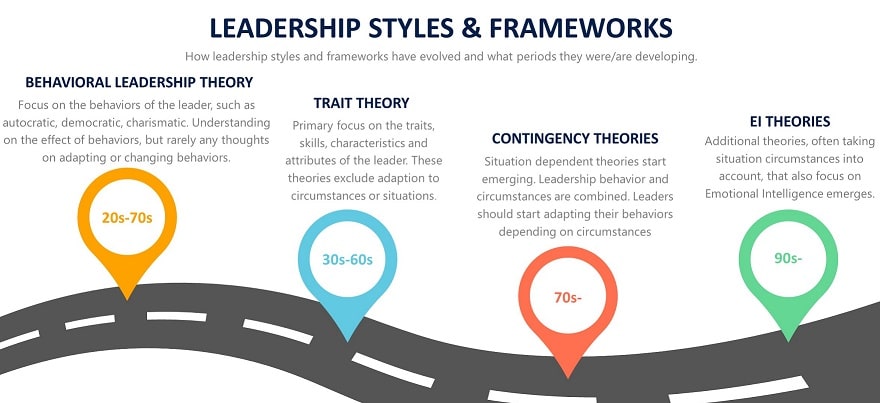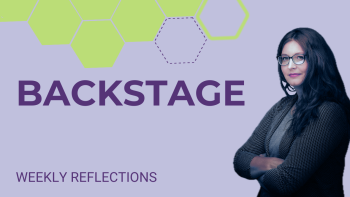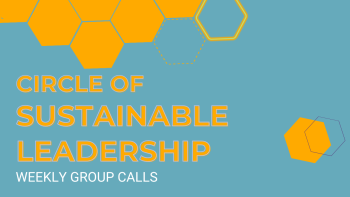Leadership Has Many Faces: Beyond the Mainstream Template

Effective leadership goes beyond the mainstream template of charisma and authority. This article gives you permission to find your own path.
A former manager recently told me: "It wasn't obvious to me that you're a leader." He felt bad about not recognising me as his peer and suggested to talk more about my achievements.
I listened and was thankful that he was brave to share it, but this is not how I do things. I don't want to constantly blow my own horn. Don't get me wrong: I'm proud of my achievements, but showcasing them all the time? No, thank you. I focus my energy on here and now.
BUT
His comment revealed how narrowly we define leadership in our world and that we don't see it even it is in front of us.
The Mainstream Leadership Template
When we think of a "leader," most of us picture the same prototype: corporate title, loud voice, commanding presence, corner office, constantly self-promoting, never showing uncertainty or admitting failure.
This leader announces their achievements, dominates meetings, makes unilateral decisions, and ensures everyone knows exactly who's in charge.
The person who treats every interaction as an opportunity to demonstrate their authority and expertise.
But here's what this narrow definition misses: it represents just one slice of how humans can effectively lead others.
Leaders Come in All Forms, Shapes, and Colours
Real leadership diversity means recognising that effective leaders exist across the entire spectrum of human personality, approach, and style. The quiet strategist who influences through deep expertise. The empathetic connector who builds trust through authentic relationships. The methodical systems-builder who creates lasting change through careful planning. The collaborative facilitator who brings out the best thinking in others.
Some leaders inspire through vision, others through competence. Some lead through charisma, others through consistency. Some make quick decisions, others build consensus. Some are highly visible, others work behind the scenes to enable others' success.
We need all of them!
This isn't about being politically correct—it's about recognising organisational reality.
The mainstream template creates two devastating problems: it pressures existing leaders to conform to approaches that drain their energy and diminish their effectiveness, and it keeps potential diverse leaders from stepping up in the first place.
When leadership is defined so narrowly, many natural leaders look at that template and think "that's not me"—so they conclude they're not leader material. Even when people around them clearly see their leadership qualities, they opt out rather than try to fit a mold that feels fundamentally misaligned with who they are.
We lose countless potential leaders not because they lack capability, but because they don't want to become the mainstream version of a leader. They'd rather stay in the background than sacrifice their authenticity for a role that requires them to be someone else.
Leadership styles
Are there only this one narrow leadership style? Of course not! Let me introduce you with work of Kurt & Daniel.
Kurt Lewin's Three Classic Styles (1939):
Lewin identified three distinct leadership approaches based on decision-making and control:
- Autocratic/Authoritarian: Leader makes all decisions independently, provides clear directives, maintains strict control. Effective in crisis situations and with inexperienced teams.
- Democratic/Participative: Leader involves team members in decision-making but retains final authority. Research shows this is often the most effective overall approach.
- Laissez-faire/Delegative: Leader provides minimal guidance, allowing team members full autonomy. Most effective with highly skilled, self-motivated professionals.
Daniel Goleman's Six Emotional Intelligence-Based Styles (2000):
Goleman expanded the framework based on emotional intelligence competencies:
- Coercive/Commanding: Demands immediate compliance, best for crisis situations requiring quick action
- Authoritative/Visionary: Provides clear vision and direction while allowing flexibility in execution
- Affiliative: Focuses on people and relationships, creating harmony and positive team climate
- Democratic: Seeks input and builds consensus, effective when team expertise is needed
- Pacesetting: Sets high performance standards and leads by example, works with motivated high-performers
- Coaching: Focuses on individual development and long-term growth, ideal for building capabilities
These are only two of many others. If you want to dive deeper I would suggest you to start with LeadershipAhoy website.

Really good leaders don't stick to one style—they develop the ability to recognise which approach fits the situation and adapt accordingly: what works in a crisis may fail in creative collaboration, what succeeds with experienced professionals may struggle with new teams.
Leadership Mapping Challenge
This week, I challenge you to identify your own leadership styles and map the leadership diversity in your own environment.
Don't limit yourself to people with formal authority—look for natural leadership wherever it appears. Which styles are overcrowded in your environment? Everyone seems to be commanding/autocratic, or everyone defaults to democratic. Which styles are missing entirely? No natural motivators, no visionary leaders, no one comfortable with laissez-faire approaches.
What is your own contribution? What kind of leader are you, and where is that leadership most needed?
Remember that leadership comes in all forms, shapes, and colours. Your authentic approach—whether it fits the mainstream template or not—has value that your environment needs.
Categories: : leadership, diversity, permission
 Kris Corbus
Kris Corbus 





